#sargon pop
Text
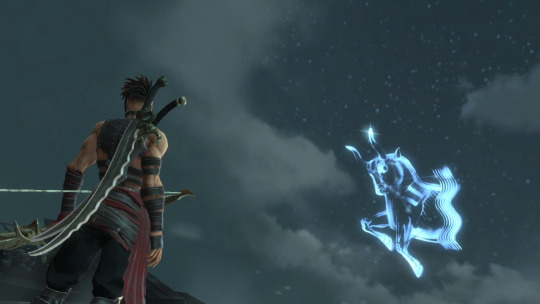
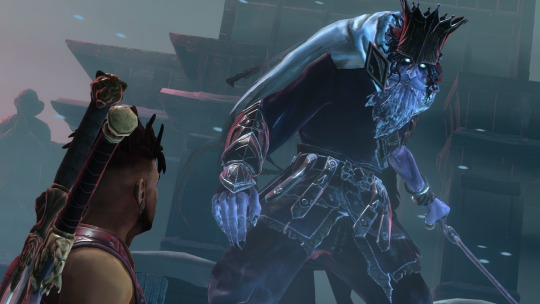


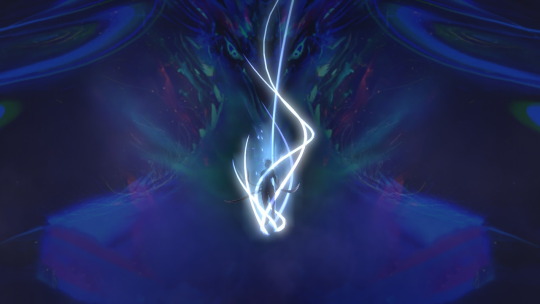
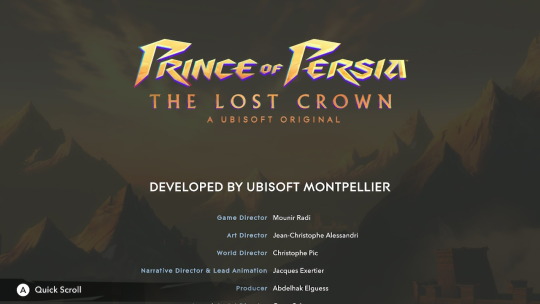

April 20th 2024 - WOOOO I 100%ED PRINCE OF PERSIA: THE LOST CROWN. THIS GAME IS PHENOMENAL! What a supremely crafted Metroidvania with so much heart and soul! One of my favourite games of the year so far!
Going full completionist is a badge of honour I don’t bestow for many games, but this one fully deserved it. Absolutely check it out for your Metroidvania fixing, it is an experience worth having!
#gaming#video games#nintendo#nintendo switch#prince of persia#pop#pop tlc#prince of persia the lost crown#the lost crown#ubisoft#ubisoft montpellier#metroidvania#metroidvanias#2d platformer#2d games#sargon pop#sargon#vahram#king darius#completion#completionist#100% completion#simurgh
6 notes
·
View notes
Text
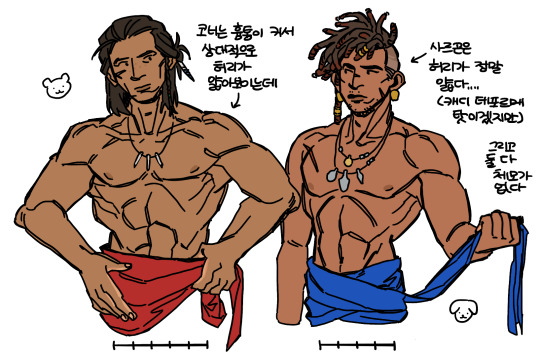

Body types of my two favorite characters and PoP The Lost Crown in a nutshell
#fan art#assassin's creed#assassin's creed 3#connor kenway#ratonhnhaké:ton#sargon#vahram#pop sargon#pop vahram#prince of persia#prince of persia the lost crown#the lost crown#pop the lost crown
73 notes
·
View notes
Text
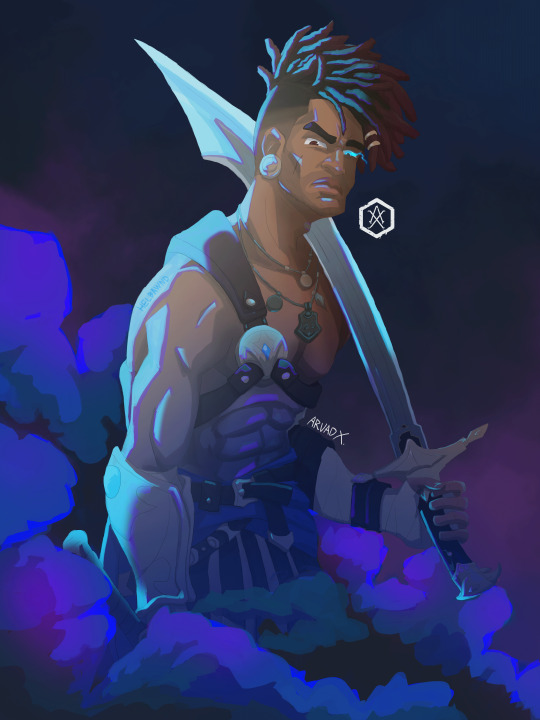
I haven’t played PoP game since the 2008. I'm a fan of the series, the graphic novel, and of Ancient Persia history and the mythologies it brings. I can't wait to see what Sargon, the Immortals, and the devs bring.
#helbawnd#artists on tumblr#digital art#prince of persia#gaming#fanart#sargon#prince of persia the lost crown
39 notes
·
View notes
Text
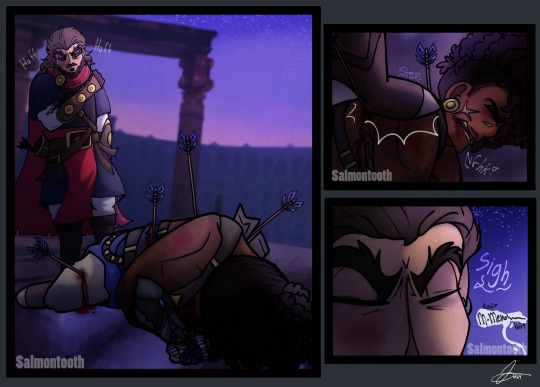
@gryffintheparrotcat brought to my attention that Menolias manages to kill Sargon in an alternate timeline, so I knew what I had to do
Read more for a little drabble I wrote!
SPOILERS FOR POP: THE LOST CROWN, GRAPHIC DEPICTIONS OF VIOLENCE, MAJOR CHARACTER DEATH
Menolias knew he should’ve missed. Sargon was light and quick on his feet, making him nigh impossible to hit. But, somehow, the arrow Menolias had fired from the air had found its mark. Perhaps it was the mountain that made the Rashabar slow and sluggish with exhaustion, or Menolias needed to have more faith in his archery skills. No matter the cause, the effect of his actions played out in front of the Immortal.
Menolias watched in a disbelieving haze as the arrow head buried itself into Sargon’s torso, causing the traitor to curl in on himself in a muffled cry of pain. Menolias quickly snapped back into a combat mindset and notched another arrow as he fell back to the earth. He fired. And then he fired again. And again. And again. All of the arrows found their target, hitting Sargon in the back, shoulder, leg, and chest, causing the young man to fall to one knee. These shots would’ve killed an average man, but Sargon had athra flowing in his blood, and he still stood. However, athra was only useful if the blood was still inside the person, and not spilling out onto the ground.
Sargon, with wavering steps and harsh breath, charged with a furious yell as soon as the archer landed, clearing running off adrenaline, and in an auto-mode mindset. But the arrows slowed him down and the injuries he suffered hindered his footing. It was almost too easy for Menolias to roundhouse Sargon, his foot slamming into Sargon’s jaw and sending the Rashabar flying away from him.
Sargon hit the ground with a sharp cry, the momentum of Menolias’s kick causing him to slide across the cobblestone before coming to a jarring halt. The Rashabar didn’t get back up. But he was alive; Menolias could see (and hear) his wheezing breaths, his sides and chest heaving as he struggled to intake enough air. Menolias crept closer, but he holstered his bow. He knew Sargon was in no condition to continue fighting him. Menolias doubted Sargon would be able to get up even if he wanted to.
As Menolias loomed over Sargon, he felt a twinge in his chest. Despite everything, despite the betrayal, despite the hurt, Menolias had a fondness for Sargon. Sure, the kid was cocky and arrogant at times, but he had a certain charm he brought to the Immortals. This man (still a child when he joined their group) had changed Menolias’s life, and the older Immortal couldn’t truly imagine a life where Sargon wasn’t in it. But here they were, with Sargon bleeding out at Menolias’s feet. His breaths were beginning to whistle in his dry throat, and his wheezing had quieted down to light gasps.
Menolias planted a sturdy boot on Sargon’s shoulder, and the traitor winced from beneath him, a small pained noise slipping out from his clenched teeth. He had his eyes screwed shut, his brow furrowed in agony as the arrows bit into his flesh.
He coughed harshly, blood starting to seep from the corner of his lips. From his experience in battle, Menolias knew one of the arrows must’ve hit a lung, or at least nicked it. It was the most pathetic Menolias had ever seen Sargon. He didn’t look this pitiful even after his fight with Vahram all those years ago.
So, they stayed there in the falling twilight, Menolias keeping his foot on Sargon’s shoulder in an attempt to keep him down. But it was all for show; Sargon wasn’t getting back up. He couldn’t. Menolias actually didn’t know why he had planted his foot down; maybe out of habit with enemy soldiers? Or maybe this was the only comfort he could give as the young man slowly slipped away from the land of the living. Silence blanketed the two, besides for crickets beginning to stir and Sargon’s wheezes starting to fade.
Menolias wanted to scream in that stillness. He wanted Sargon to say something- anything! Why did he kill Ghassan? Why would he betray the Immortals after everything they’ve been through together? We loved you! Menolias cried within his mind. “We took you in! We were your brothers! And this is how you repay our kindness?”
Of course, he got no answer. But then, Sargon coughed, his entire body shaking as he dislodged blood that had clotted at the back of his throat.
Then, he whispered, in the most broken tone, “M-Menoli…”
Sargon’s voice gave out, and he left his last word unfinished. Menolias had seen enough death to know what it looked like; Sargon was dead. Menolias sighed, squeezing his eyes shut as he felt a stinging sensation. Vahram would admonish him for showing grief for an enemy. Even if that enemy was someone he had loved like a brother.
Menolias lifted his foot off the boy’s body, and he dropped to one knee. He gently stroked a dreadlock away from Sargon’s eyes; he knew it did no good, since he was going to leave Sargon’s body there for the vultures to fight over. Then, in a low tone, he whispered to the night air, “I never wanted this fight… I am sorry, little one.”
With that, Menolias turned away and began to leave the palace. Vahram would be pleased to hear of this victory.
#my art#prince of persia#prince of persia the lost crown#sargon#Menolias#prince of persia: the lost crown
12 notes
·
View notes
Text
Me and the other squirrels (@kaihoney & @salmontooth ) have been creating dozens of AUs in the best PoP discord server if I do say so myself and decided to make a collab piece out of 3 lucky AU!Sargons:

Figured I shouldn't just post an AU!Sargon design unexplained so here is a quick look ar Firebender!Sargons design, who knows maybe I'll even post more about this AU at some point, gotta get FateSwap done first tho (follow kai if you want to see fateswap! I may have meddled in it but kai will be the one posting it)

And ofc links to their posts so you can get infos on fateswap and mtaw:
https://www.tumblr.com/salmontooth/750389185612005376/the-gang-is-all-here-a-collab-with-kaihoney-and?source=share
https://www.tumblr.com/kaihoney/750390055475003392/the-trans-meetup-i-mean-sargon-meetup-d-same?source=share
#prince of persia the lost crown#prince of persia: the lost crown#prince of persia sargon#firebender!sargon#fate swap au#atla au#more than a weapon au
9 notes
·
View notes
Text

There's a thing I call "Pavlovian pop culture" which is when there's some phrase or other signal that makes you almost involuntarily burst out with the remainder of some pop culture reference or quote.
Today I discovered that Sargon is one of these. I was walking down the street with my wife, saw this shop sign, and immediately started singing "...Hammurabi, Asherbanupal, and Gilgamesh!"
The TMBG programming goes deep with me.
13 notes
·
View notes
Photo

I don't really have any tips, but I can provide a quick terminology rundown.
The reply got too long to respond to the ask normally, my sincere apologies. Some 6 pages worth of text under the cut.
Mesopotamia is, broadly speaking, the area between Tigris and Euphrates, in other words most of modern Iraq and part of Syria. At the dawn of recorded history, in the Early Dynastic period, the inhabitants of the area were Sumerians and Akkadians. These are largely just linguistic labels, they do not correspond to states in the modern sense. Sumerian is a language isolate, Akkadian belongs to the family of Semitic languages, though the “East” branch it is assigned to is now extinct, and has been for a long while. There was a lot of borrowing between the two languages, including individual words, phrases, and even grammatical structures. The oldest texts are, generally, Sumerian, but Akkadian names already pop up here and there.
Some of the major city-states in the early period of Mesopotamian history were Uruk, Ur, Umma (with its religious center in nearby Zabalam), Lagash (with religious centers in Girsu and Nigin/NINA), Adab (with religious center in Kesh), Kish and Mari. Nippur and Sippar were religiously significant, but not political powers in their own right.
Additionally, a major city in the third millennium BCE was Ebla, located to the west of Mesopotamia. The Eblaites spoke a language similar to Akkadian, Eblaite. It is presumed other related dialects were spoken all over northern Syria through most of the third millennium BCE, for example in Nagar and Nabada, but they eventually vanished in favor of Amorite and other similar languages, which belong to the western branch of the Semitic language family, much like Hebrew or Aramaic.
The Early Dynastic period was followed up by the Akkadian Empire, ie. the Akkadian or Old Akkadian or Sargonic period. The formerly insignificant city of Akkad gradually conquered all of Mesopotamia and quite a few areas beyond it, but this all eventually fell apart after a bit more than a century. This resulted in the establishment of Gutian rule over (part of) Mesopotamia, which is typically not treated as a distant era. The Gutians and their homeland Gutium (presumably located in the Zagros) hardly figure in historical records, and were essentially synonymous with the notion of crude mountain-dwelling barbarians in the eyes of Mesopotamians. Little is left in the way of material culture which can be linked to them, but the names of the few recorded kings or chieftains do not appear to match any known language. For the time being Gutians are largely an obscure curiosity and not much can be said about them. There are a few other similar labels too, like Lullubi or Turukkeans, similarly nebulous for now.
A few indigenous dynasties coexisted with the Gutian rulers, for example the Second Dynasty of Lagash, but it took the rise of the Third Dynasty of Ur to warrant a fully new label: near the end of the third millennium BCE, the Ur III period - also known as Neo-Sumerian - began. A new development was the influx of foreigners in Mesopotamia from both west and north - most importantly Hurrians (more on them later) and Amorites. The latter, who I already mentioned earlier, lived in most of what is now Syria, but they migrated en masse to southern Mesopotamia, where they gradually assimilated. It should be noted “Amorite” is not an entirely homogenous group, and the term is actually how Mesopotamians called westerners and the land they came from, not an endonym. The term Martu has the exact same meaning. The initial perception of Amorites was negative - they were portrayed as barely civilized and barbaric, presumably due to their nomadic agricultural-pastoral lifestyle differing from that generally followed by Mesopotamians.
The Ur III period ended abruptly after less than 200 years. What followed was the Old Assyrian period in the north, where the city of Assur became the unquestionable cultural hegemony, paving the road for later Assyrian culture, and the Isin-Larsa period in the south. Isin-Larsa is sometimes treated as a part of the Old Babylonian period, which I personally find preferable. Old Babylonian period proper refers to the rise of the city of Babylon, formerly utterly insignificant, as a new hegemon. However, Babylon did not just magically rise to the top: to reach its status, it had to defeat the other great powers of its era. As you can guess, two were Larsa and Isin; additionally, Uruk held on for a while, Mari came back on top under new management, and in the Diyala area (which for much of Mesopotamian history maintained distinct unique traditions but remains relatively poorly known) Eshnunna attained a similar position. There was obviously also Assyria, which was involved either in (long lived) establishment of new trade routes or (for now short lived) conquests. A further powerful state was Yamhad in northern Syria, centered around Aleppo, which de facto belonged to the broader Mesopotamian political sphere. Many of the old centers of power vanished - Umma and Lagash in particular fared poorly. There are also areas we simply do not know all that much about, for example Der in the far east of Mesopotamia had its own monarchs, but the site has yet to be excavated.
The newcomers to Mesopotamia, Amorites, did pretty well - many new dynasties used Amorite names. However, Akkadian was the most commonly spoken language at this point, and it seems with time the vernacular use of Amorite ceased. Sumerian was no longer spoken, but continued to be used as a language of the learned, not unlike how Latin survived in the middle ages and later. Much of what is labeled as “Sumerian mythology” online are texts compiled in Old Babylonian scribal schools to teach Sumerian.
We know relatively little about the end of the Old Babylonian period. A somewhat uniform culture started to emerge, and this arguably is the point at which it becomes fair to call the entirety of southern Mesopotamia “Babylonia”, though this term is also used in scholarship to refer to earlier periods which is a bit confusing seeing as Babylon was but a small, irrelevant town. Two further plot twists were the formation of the so-called “Sealand”, a kingdom in the Iraqi Marshes which remains poorly known, and the arrival of another new group of people, the Kassites.
We know next to nothing about the early history of the Kassites. We have a decent idea where they came from - the Zagros - but people with Kassite names are absent from earliest records from eastern locations so they might have migrated from somewhere else. Their language, which is only known from personal names and a handful of synonyms in Mesopotamian “dictionaries” is most likely an isolate. Under unclear circumstances, a dynasty of Kassite origin took over Babylonia, eventually conquered its only rival, the Sealand, rechristened the entire area “Karduniash”… and promptly much like Amorites earlier got gradually assimilated - so thoroughly that I’ve seen a proposal to refer to the Kassite dynasty as “kings with Kassite names” rather than as strictly Kassite kings. The same presumably happened to ordinary Kassites, though it is plausible that their culture in its non-Mesopotamified form might have survived in their Zagros homeland until Hellenistic times. At least early on, the Kassite rule brought Babylonia an unprecedented level of stability, and the religious centers which did survive fared pretty well, especially Nippur.
Meanwhile, the Assyrians entered the Middle Assyrian period, and decided to give this “empire” thing a try, with varying results. Generally speaking, this was bad news to you first and foremost if you were a Hurrian - more on that in their own section later.
Despite its early successes, the Kassite state eventually fell apart. What followed were various brief dynasties which remain poorly known - the second dynasty of Isin, second dynasty of Sealand, Bazi dynasty, Elamite dynasty (with a whopping total of one ruler), and the E dynasty (yeah). This is typically referred to as the Middle Babylonian period, but note that some authors refer to Kassite period as already “Middle Babylonian”, while others basically count the entire history of Babylonia down to the establishment of the Neo-Babylonian Empire as “Middle Babylonian”.
In the Middle Babylonian period in the strictest sense, two new groups arrived or emerged, the Arameans and the Chaldeans, both of them speaking West Semitic languages. Arameans were also active virtually all over Syria, where they founded new kingdoms such as Aram-Damascus. A further group were the Suteans, “southerners”, who already show up here and there earlier and probably spoke a language similar to Amorite, but remain very nebulous. Due to political uncertainty, raids of various newcomers to the region, inept rulers etc. Babylonia was not particularly stable through most of this period Eventually, the Assyrians, who built a sizable empire once again, decided they might as well give taking over it a try - and succeeded. While Akkadian remained in use under their rule, Aramaic rose to an almost equal status, and seemingly gradually displaced it as vernacular in more and more areas.
While the Assyrians incorporated many other states into the Neo-Assyrian Empire, somewhat homogenizing the culture of the region in the process, their dominion did not last forever, and eventually they were themselves conquered by politically resurgent Babylonians, who established the new Neo-Babylonian Empire, in vintage literature called “Chaldean” sometimes. Obviously, this did not end Assyrian culture and identity per say, but its role as arguably the foremost hegemon in the history of the world up to that point was over. Babylonians reigned for a few centuries, consolidated Assyrian conquests, got to be the villains in the freshly compiled Hebrew Bible, and finally lost to Persians (who will get a brief paragraph later)..
The final period of the history of ancient Mesopotamia is sometimes referred to as “late Babylonian” and “post-Imperial Assyrian” and essentially refers to the intellectual and religious life of culturally Mesopotamian communities under Achaemenid, Seleucid and Parthian rule. As expected, it is basically a gradual decline (though the city of Assur did recover, and Uruk was doing reasonably well) coupled with occasional pursuit of “traditional” lifestyle resulting in puzzling developments like the construction of a new enormous temple for previously seldom worshiped sky god Anu in Uruk, Akkadian continued to be spoken and written, but less and less often, and finally went extinct, though it lived on via loanwords in Aramaic, and less directly in Arabic, Hebrew and Greek.
A symbolic end of ancient Mesopotamian culture is often assumed to be the death of cuneiform - it is presumed that the last people capable of reading it lived in the early centuries CE. Some customs presumably persisted longer, especially in Harran, but do not fall for the unhinged wikipedia claim that Mesopotamian religion was alive in the eighteenth century CE, sources from Simo Parpola, a man whose work I can only describe as devious. Dude is convinced Sumerians were basically Finnish, Assyrians were monotheist, and rewrites everything about personal gnostic beliefs.
With this crash course in the history of Mesopotamia proper done, let’s look at the periphery of the cuneiform world..
The north was known as Subartu in Mesopotamia, and its inhabitants as Subarians.
Subarian was not an endonym, obviously; today it is agreed that in the overwhelming majority of cases, it corresponds to the label “Hurrian”. The Hurrians entered the scene in the Old Akkadian period. They initially lived in the distant north, possibly initially migrating to Mesopotamia from the area around lake Van but eventually spread through much of the north of modern Syria and Iraq, as far as the Kirkuk area in the east, as well as through southeastern Turkey. Hurrian soft power, chiefly in terms of naming patterns and religion, reached even further.
Mesopotamian perception of the northerners is a bit mixed: on one hand, they dodged the label of subhuman barbarians and whatnot, on the other the term “shubur” was essentially a fancy synonym of “servant”. However, overall the positive associations seem more common: they could hold prominent positions in royal administration, their religious expertise was often recognized, and there were even cities where the vernacular was seemingly something like a pidgin or creole mixing Hurrian and Akkadian, Nuzi being the main example. The Hurrian language itself was not related to Sumerian or Akkadian, and has only one known relative, Urartian. Both are extinct.
The oldest known Hurrian state was Urkesh, a client of the Akkadian Empire. In later periods the well attested examples include Nineveh and Arrapha. The apparent religious capital of the Hurrian world was Kumme, the city of the weather god Teshub, which has yet to be properly located. While Mesopotamians were considerably less invested in weather gods than many of their neighbors, we do nonetheless know it had enough prestige for Zimri-Lim of Mari to honor the local god.
The only Hurrian state to reach a more or less imperial scale was Mitanni, roughly contemporary with the Kassite period in Mesopotamia. For unknown reasons, kings of this empire often had names seemingly borrowed from an early Indo-European language, despite writing in Hurrian and Akkadian. How come remains unresolved, and the online discourse sadly often is in thrall of 19th century race science, gleefully kept alive by youtube talking heads, twitter trads with names like AryanHunterGatherer420, Hindu hypernationalists, and other similar groups. It’s basically a largely irrelevant bit of trivia.
While Hurrian language reached a degree of prestige midway through the second millennium BCE, with kings in many Syrian cities taking Hurrian regnal names and Hurrian deities spreading to local pantheons as far south as Ugarit on the coast and Qatna inland, the success was ultimately not meant to last, and the resurgent Assyrian state eventually conquered Mitanni, its clients and Hurrianized Syrian statelets, which resulted in the extinction of Hurrian language probably at some point in the early first millennium BCE. Obviously Bronze Age collapse did not help, either.
As a side note - the closest linguistic relatives of Hurrians, Urartians, were not really culturally similar to them, and only entered history in the first millennium BCE. They fought Assyria, built a network of enormous fortresses in the mountains, eventually lost nonetheless and… that seems to be it. They might have played a role in the early history of Armenia.
More parallels can be drawn between strictly Hurrian states and the partially Hurrianized part of Syria. I do not think there is a single agreed upon term meant to refer to this area, sadly, at least one more precise than “archeological sites in northern Syria”. The primary cities of this cultural sphere would be Ugarit, Alalakh, Carchemish, Nuḫašše, Tunip… The degree of “Hurrianization” varied between periods and locations, obviously. Ugarit is a special case: while most sites in the region have not yielded any texts written in a local vernacular language, this city does have an enormous corpus of such texts, often written in a unique script, alphabetic Ugaritic. It was used to write Hurrian locally, too. Labeling Ugarit as “Canaanite”, as often done by neopagans, Bible scholars, wikipedia editors, SMT compendium entry authors and the like is not really correct, as the inhabitants of this city-state themselves were pretty clear about this term designating a completely different area from their point of view.
Ugarit was separated from Canaan with a poorly known kingdom apparently called Amurru. Not much is known about it so I’ll skip it. How come an exonym for westerners used in Mesopotamia came to be an endonym for a kingdom well to the west to traditional sphere of direct influence of Mesopotamian states is beyond me. Canaan in the strict sense starts roughly around Byblos and ends in Gaza, encompassing cities such Sidon or Tyre. After the Bronze Age collapse, the culture Greeks referred to as “Phoenician” arose there. Ugarit by design isn’t really Phoenician because it’s well to the north of that and was gone by the time the maritime Phoenician networks of colonies arose, which seems hard to grasp for Wikipedia.
To finish this section it’s worth noting that the “Hurrianized” zone overlaps with what is typically referred to as “Middle Euphrates”, an area including cities such as Emar (capital of a kingdom known as Aštata) and Tuttul. Technically the term can also encompass the kingdom of Mari which was already discussed before as well (as well as areas such as Suhu and the city of Hit). The primary unifying cultural factor in this entire region was the presence of Dagan as the head of the pantheon; in Mesopotamia he was more or less just a god granting authority over the west, on the coast he is rare, and in Hurro-Hittite sources almost absent.
Anatolia is much more straightforward to explain, at least the part of it which is broadly speaking relevant here. The oldest inhabitants of at the very least the north of the area were the Hattians. Hattians spoke Hattic, which is a language isolate as far as we know, though it has been proposed it might be distantly related to various languages spoken in the Caucasus today. Hattian culture was evidently urban and reasonably complex, to the point that when subsequently a wave of new groups arrived in Anatolia their culture came to be largely patterned after that of the Hattians; these were the Hittites.
Hittites actually did not call themselves Hittites - they used the term “land of Hatti” for the area they inhabited, and “Nesite” for their language; the latter is derived from Kanesh, a famous and well documented city.
Next to Hittites, speakers of two other Indo-European languages played a role in shaping Bronze Age Anatolia: Palaians, who spoke Palaic and lived in the far north and Luwians who spoke, wait for it, Luwian. In the long run, the last of these groups fared best, and remnants of Luwian religion persisted well into Roman times. Luwians were also seemingly the majority of the people inhabiting the so-called “Neo-Hittite” states which arose after the fall of the Hittite empire; these were eventually all swept up by Assyria and that was pretty much it for their history. I won’t lie: I can’t actually name most of them.
Comparatively little is known about western Anatolia; contrary to what you might hear from Greek mythology fans online, Troy was NOT Hittite (also, Hittites were considerably more interested in east than west, the world, in fact, does not revolve around Greece). It is presumed that the inhabitants of western Bronze Age Anatolia were the forerunners of Lycians, Lydians and Carians of classical antiquity; Phrygians arrived much later.
Already mentioned Hurrians lived in Anatolia too, specifically in the southeast in the kingdom of Kizzuwatna, whose capital was Kummani (not to be confused with Kumme!). It eventually became a Hittite dependency, leading to a period of “Hurrianization” of Hittite culture near the end of the Bronze Age. Hurrian deities suddenly came to occupy the top of the Hittite pantheon. Hittites also started compiling or translating Hurrian literature. The translations sometimes dabble in interpretatio, with some, but not all, Hurrian gods appearing under Hittite names, with variable results (I will never understand what the hell was going through the head of the Hittite who used Anzili as stand-in for Shaushka), but the locations, themes and core plots are evidently Hurrian in origin, and reflect Hurrian theology. And, needless to say, they cannot be randomly combined with Hittite elements - Teshub did not fight Illuyanka nor does he have anything to do with Telipinu, contrary to what shoddy online sources may tell you.
The last part of the question, regarding Persia, is also pretty easy to explain. The history of modern Iran begins roughly contemporarily with Mesopotamia with Elam - this is basically the Mesopotamian term for the area, though, there were multiple states which can be considered “Elamite”. Elamites spoke, wait for it, a language isolate, Elamite. We know there were multiple Elamite states - Awan, Anshan, Shimashi et cetera - but their full extent, detailed history and so on are presently impossible to write. A special case is Susa, which due to proximity to Mesopotamia was a bit like a contact zone between Elamite and Mesopotamian culture, with a heavily “Mesopotamized” pantheon; we do know this city’s history reasonably well. Mesopotamian political interests rarely, if ever, reached further east than Elam; we know there was a state further east, Marhashi, which might correspond to the so-called “Jiroft culture”, and that merchants from even further east, ie. the Indus Valley, were sometimes present in Mesopotamia, but that’s about it. There is no real indication Mesopotamians were aware of the Bactria-Margiana Complex.
Persians only come into the picture in the first millennium BCE. Presumably they started moving into Elamite territory and got at least partially acculturated since the first sources, the Achaemenid archives, indicate that the earliest Persians worshiped both Ahura Mazda (“Auramaza” at the time) and Elamite gods, especially Humban; there is also evidence for coexistence of speakers of Elamite and Persian in various strata of society. Eventually Elamite went out of use though. Other peoples who arrived alongside Persians include the Medes and the Parthians, who spoke closely related languages. That’s basically it.
While the history of the Arabian Peninsula actually does not overlap with Mesopotamia in the discussed period, I suppose it is worth to at least mention Dilmun and Magan, the Bronze Age names for, respectively, Bahrain and Oman; both areas actively traded with Mesopotamia and were seemingly inhabited by speakers of languages related to Amorite. Also, the label “Arab” first appears in the Neo-Assyrian sources and I think it’s safe to assume it was an endonym but little can be said about it other than people using it at the time lived south of Damascus at the time. I can’t really help much with the first millennium BCE kingdoms in that area because I do not actually know much about them.
29 notes
·
View notes
Text
The lore keeper.
What? Sweet Baby Inc? Gamergate 2? It's been ten years. Everything changed in 2014. Wasn't it around 2014 when I created this account? After so many years of shooting into the dark and seeing what sticks I figured out what gets me the most engagement based on what I like making and what people like reading and raw politics isn't it but uh.
Gamergate is probably the most misremembered but frequently referenced event in internet pop culture and gaming pop culture that it would probably be a good idea to do you just this one favor, in terms of fighting through the fog of war.
One side will say that Gamergate was a consumer revolt and the other says that it was about harassing women (specifically Zoe Quinn and Anita because the Fine Young Capitalists were not harassed by Gamergate supporters despite being women) but that's the cross talk you usually get when scrolling through twitter X or listening to random comments in YouTube videos that brush the subject for whatever reason.
If you look it up on Wikipedia you'll get Harassment angle, but that was sourced from the direct opposition of Gamergate so it's kind of like asking what a solider in the trenches thinks of its enemy. It's certainly their opinion, but is it the most educated and comprehensive opinion on the subject matter you can hope to muster?
Where is the most comprehensive source you can find regarding Gamergate?
youtube
Yes. Ramiel. Beyond the Wikipedia articles, the YouTube videos, and even google search results I have Deepfreeze which credit to its name, has been mostly frozen and hasn't changed much since 2017 which is when Gamergate died down.
That's right, every reference to Gamergate after 2017 was just drudging up a dead topic. So much so that when Sargon (a staunch Gamergate supporter) and Mister Metokur (one of the ex-faces of Gamergate) talked about presenting Gamergate to Trump, Mister Metokur laughed at Sargon, uproariously. Now Sargon won't even show up in a video about Gamergate 2 when it's uploaded to his company's channel.
But that's all beside the point. If you were ever interested in getting a thorough breakdown of what happened and you're tired of the single paragraphs and various glib answers.
You can visit that site and read what happened and why for yourself.
I show this to you because I was a lore keeper. I have archived many moments from that era for historic posterity, which includes saving that link which I only acquired from a now non-existent video.
By sharing this with you I have fulfilled my duty. Now, we will speak no more of it.
5 notes
·
View notes
Text
The first game I played and completed this year was Prince of Persia: The Lost Crown. And what a way to start the year because this game was an absolute banger! Every now and then Ubisoft comes out with a random gem. They can make games, if they want to.
I've never been much of a Prince of Persia fan and never played the games. I think I briefly played one of the PS3 titles, but that's it. What caught my interest in this one was the combat and the fact it was a metroidvania title. You almost 100% time see metroidvanias from indie devs, not devs like Ubisoft. This game also turned out to be quite far removed from the previous titles. It does have time shenanigans, but everything is different from the characters to the story.
The story is simple, the titular prince of Persia is kidnapped and taken on some mysterious mountain and you, a warrior named Sargon who belongs in a group of elite warriors called the Immortals, has to go after him and save the future of Persia. Then time related nonsense happens. The characters are quite charming and I liked Sargon a lot as a main character. He reminded me a lot of Bayek from AC: Origins. They're very similar, fierce warriors driven by anger, but they have a soft fun loving side. Also they're good with kids. The rest of the Immortals are neat.
I was really surprised just how well they pulled off the metroidvania style. There's plenty to collect and plenty of challenges to take on, and the overall map design and abilities are fantastic. Every time I got new powers I'd think of all the place I can access now. There are some extremely cool and creative areas you don't often see in these types of games. I loved the setting and pieces of Persian mythology scattered around. This game really makes me want to dive into the history of the real Persian empire and their ways.
What really sets this game apart however is the combat and the boss fights. Lost Crown really has one of the best combat systems of any 2D metroidvania and you can pull off some crazy combos if your fingers are dexterous enough. You have a wide moveset with plenty of tools on the side making a combat system so enjoyable that you don't mind fighting trash mobs all over again. I love me my air juggles. The bosses were fantastic too and plenty challenging even on normal difficulty. I can see these bosses being a nightmare on harder difficulties.
What I especially loved about the bosses was that they were flashy. Like really flashy, some fights got so ridiculous that it started to remind me of a shounen anime with big lasers, powers ups and punches that can crack the continent in half. I don't think they even ever explain why all the characters are like from Dragonball Z. I know they're the "Immortals", but I just thought they were really capable warriors, not borderline gods. I'm sure it wasn't like this in the previous PoP titles.
Honestly? This game was truly one of the greats. I can't really think of anything negative to say, and it's been a while since I felt like that about any game. Anything even slightly negative is just nitpicks like some of the platforming sections are a bit annoying and some enemy attacks feel far too fast to properly react to. But that could be just because I suck. If I had played this game on a harder difficulty it would have handed my ass to me on a silver platter.
I almost can't believe that this game was made by Ubisoft. Apparently it was the Rayman devs, so that checks out. Rayman Legends was a banger as well. I have nothing but praise for Prince of Persia The Lost Crown! I wholeheartedly recommend it to anyone who's even a slight fan of metroidvania titles. Or games with good combat.
3 notes
·
View notes
Text
Do you play Everquest 2 or are thinking of trying Everquest 2?
Come check out Cloudwalkers!

I’m reviving my guild on the Maj’dul server for the expansion! Squee.
Cloudwalkers has been around since 2006! This guild not only strives to be a warm, cozy space away from IRL but we know the value in “found family” and would be honoured to be your queer-ass home in the digital world.
Since I myself am an artist, naturally Cloudwalkers is a hangout space for creatives. Let’s write, craft, decorate in-game, RP, share music, and whatever else makes our little hearts sing.
Speaking of music have a taste of our sound! There are Spotify playlists here and here, both of which I made specifically to play while adventuring in Norrath.

I am also working to build a player-made library full of EQ2 information! Introverts rejoice - head to our guild hall in Kelethin and pop into our library. I have my “EQ2 in 2022: What You Need to Know” book and I will soon be adding books on levelling, basic grouping, basic raiding, and more.
More Cloudwalkers highlights include:
Queer-led and operated
All friendly playstyles welcome
RP optional but welcome
Furry-friendly
Newbie-friendly (happy to tutor you!)
My SK is full of dad jokes
18+ because I swear like a fucking sailor
To keep our guild at its best, naturally we gotta turn away toxicity. If you like to be a troll, be racist, homophobe, have entitlement issues, think women belong in the kitchen, and generally like be an ass to others this is not your space! Away with ye.
Did you get through all of that?
Fantastic! PM me here or catch me on Maj’dul - look for Olisha, Sargon, Athenia, or Masako.
#renewal of ro#everquest2#everquest 2#everquest#daybreak games#mmorpg#everquest 2 guild#just a queer looking for other queers#be gay do crime#I am not a furry but I AM Captain Monsterfucker so take that as you will#the inmates run the asylum#if you've ever used the phrase ok boomer this is your guild#we're like if the new combine empire kept going on#eq2 guild#gamers of tumblr#cloudwalkers#cloudwalkers-guild
15 notes
·
View notes
Text
I'm still bothered by the Drinker recommending Arcane. A little peeved but checking out his recs, it has some great stuff. Dredd and Event Horizon he gives his recommendation and approval.
Don't know why I should take his word for it cause I did try his other recs and they weren't doing it for me so yeah.
Guess I shouldn't really put my trust in people like him.
But I also ask? Why do I like Gigguk's recommendations and not The Critical Drinker's?
Well, for starters, Gigguk is anime and I like anime so I get where he's coming from. The Drinker doesn't really have much for me aside from the anti-woke ranting every now and then.
Gigguk breaks it down when he recommends something with a tad of memes thrown in the mix and it makes for an enjoyable viewing experience.
The Critical Drinker just makes some quips and, to be honest, a tad obnoxious use of some memes and sound effects, especially "The Message" in his vids. That isn't really something I particularly enjoy.
And when I do say this out loud, it would be considered as trolling or something and that really isn't what I'm trying to do.
And then they would say vile stuff to me and I have seen some shit and read some crap that would even destroy people like me and I really fear that.
Gigguk steers clear of controversy as much as he can and he does poke jabs at woke culture like cancel culture and Twitter ranters but that's about it and that's how much I can stomach.
The Critical Drinker comes off as too strong and when I can't stomach it, I'll be considered a wimp and that's not fun. Even fucking 4chan is not that toxic, the movie and tv boards I mean.
Politically Incorrect and R9k and random is a given sure but you expect that from there. I just want the Drinker to present why the movie is shit instead of calling it woke and using surface level literary stuff that's probably not up to snuff with a Tumblr post.
Dumbsville, an equally anti-woke dude is leagues better than The Drinker in reviewing. He likes Arcane, okay, but I want to fucking reject Arcane because of that now cause I feel like he tainted it with his "approval".
I am so fucking glad, Gigguk convinced me to watch it first before that esteemed gentleman whom I have been referring to as The Critical Drinker had the chance to taint it for me. And have you seen his review, dude doesn't know the difference between an MMORPG and an FPS. Gigguk's review of Arcane is superior for the sole reason that he gets the culture and the memes.
I found the Drinker back in the day cause of my anti-woke attitude and I still have an anti-woke attitude, just that I've mellowed out. I will admit though that his video on what is woke is one of the best videos on the topic to date and for that reason I will salute him but aside from that, I'm not a fan of him.
Although his podcast interviews are not too bad, he seems chill when he's not unhinged.
So if you guys like the type of content where it's Sargon of Akkad but for movies, TV, Pop culture and Western culture war with a side of snarkiness that's too much for my sensible sensibilities, then The Drinker is for you. I recommend starting with his Why Modern Movies Suck series. A good start.
Then Gigguk for the animes. And I have a lot to say about some anitubers but that's for another post here.
If you're confused as to where I stand with the Drinker, I'm in the middle of the fence that leans into the dislike team more. Like my feet is on the dislike team's side of the fence but I also hear the like and revere side and I understand some of what they're saying but not really getting into it, y'know? If it weren't for The Drinker making that one video defining woke, which I have been looking for years and where he was not a tad bit unhinged, I would've hated the guy and my past self for even liking his videos and his talking points.
I guess I just need someone to break down the woke movies of the modern day in a not so strong way. Dumbsville and Filmento come to mind. And they're a much more interesting watch than The Drinker is for the modern me.
I just can't help but think as to what the anti-woke internet would say about my opinion. Would they cancel me?
Would they label me a troll?
Would they see me as a threat that deserves termination?
Will they bully me?
Will they harass me?
Will they kick me out of their groups and circles?
So many questions that all hinges on what other people would think of me. They say to try to listen to your side but I tried that before and tries their recommendations and that just didn't do it for me. I have bad taste according to someone online but my brother also says that to me and I think I'm okay.
I just have to consume more media before I get the urge to move to more thought-provoking media.
I want to keep talking here but I should stop now. Let me check. Okay, checked. Not long enough.
So about my anti-woke past, I started my internet journey on Pinterest and then Tumblr and then Facebook before I was introduced to 4chan and Reddit.
I was seeing these posts on Pinterest about gay stuff and trans pride and all that without knowing what it all was but I do remember my reaction to it, it was confusion and a bit of not too fond of what it was.
I still had a very favorable view of Pinterest as a whole of course. Then I went to Tumblr where the porn was still all the rage back then. Loved the things I discovered there. Didn't really had the capacity of higher thought to make posts like this back then. I was just existing and that's okay.
So I was not aware of what anti-woke was or what Gamergate was or why it was happening but I know that there are some things I dislike in Pinterest that I wanted to say something about and Reddit and 4chan came to me. Introduced to me by a friend, these two were my go to back in 2018 to 2019. I was also starting to develop an anti-woke sentiment based on the things I see. I already had a dislike of strong stuff so things that sound like The Critical Drinker I steered clear off.
I discovered KotakuInAction (Gamergate), TumblrinAction (Anti-Tumblr but quite nuanced) and SocialJusticeinAction (unhinged but less interesting brother) and I enjoyed and lapped up all the things they said. How gays are ruining media (one can argue that it is true, new characters are more favorable than rewrites and I have a lot to say about rewrites) and how the ESG focused companies are bowing down to the woke mob (which I pretty much agree, I have the idea that if the people crying doesn't know what the thing they're trying to change is then they're not worth jack and is best to be ignored or provide a polite reply that says no).
I started with the news article reviewing sites like Mr. Obvious or No Bullshit. Obvious was better and he had this humor I liked. He was just repetitive and that really wasn't doing it for me then I started looking into anti-woke media analysis cause I always saw woke media analysis like that one Meduse and Athena are feminists and such (Yas, beotch slay!!!!; sorry I had to).
So I found the Drinker through that. He was still under a million subs and stuff but he scratched an itch.
Then the pandemic happened and the lockdowns, I got to thinking about things and I realized that being anti-woke isn't all that. How? I tried their recommendations and I wasn't really feeling them.
I tried the ones they dislike or the ones I know they will dislike and I got to enjoy those.
I still remember reading my first true LGBT webtoon called Acception and it still is my standard for LGBT media.
I had some things to go through during those years and I guess the strong opined individual is something I'm not very fond of developed greatly during that time.
I know I'm weak and I want to understand how to get better. I've been trying ever since.
I know that I went kinda off topic but hmmmm.
That's all from me for now. Go away now.
#yeah#blog#rant#Gigguk#Critical Drinker#the critical drinker#thoughts#woke#peace of mind#gamergate#youtube#webtoon
2 notes
·
View notes
Text




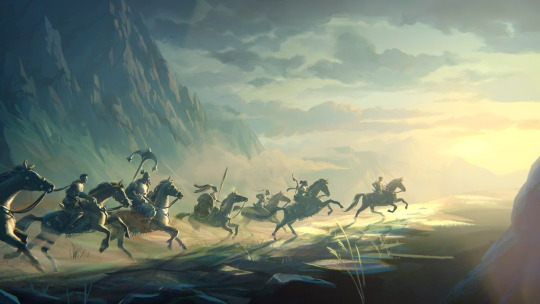



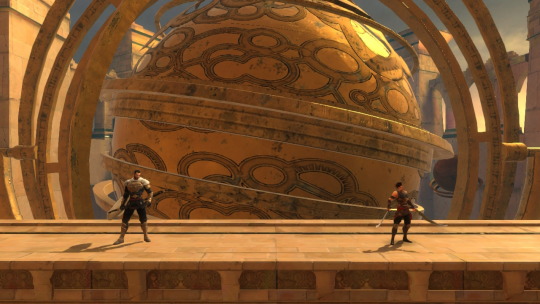
April 7th 2024 - I bought and started Prince of Persia: The Lost Crown recently and this game is phenomenal! I’ve been itching for a well-crafted and tough Metroidvania in ages and this fulfils that! I’m really enjoying the handful of hours I’ve played so far and can’t wait to play it to completion!
#gaming#video games#nintendo#nintendo switch#prince of persia#prince of persia the lost crown#ubisoft#metroidvania#video gaming#pop#the lost crown#pop tlc#metroidvanias#sargon#2d games
11 notes
·
View notes
Text
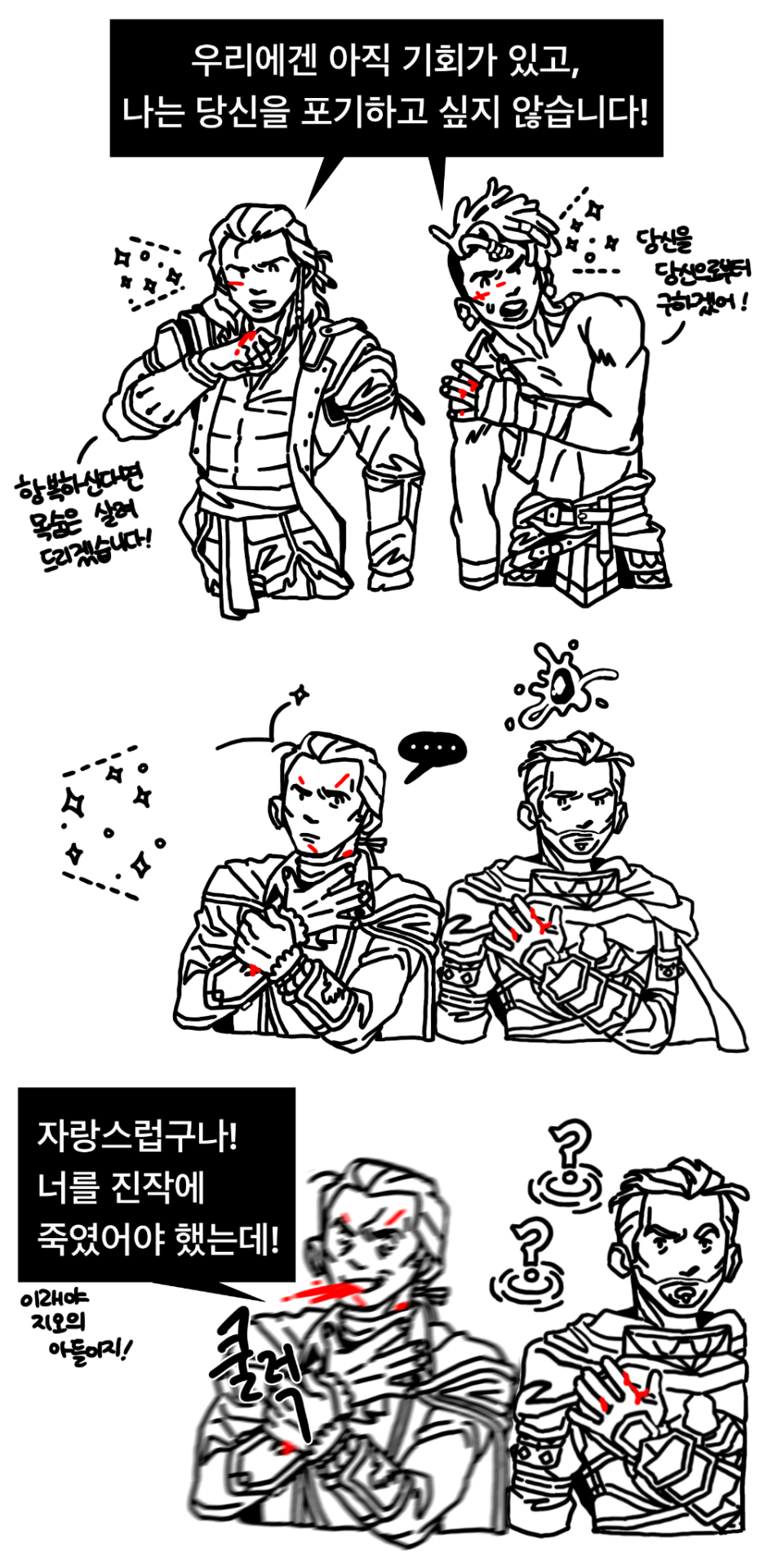
Assassin's creed 3 × PoP The Lost Crown
#assassin's creed#assassin's creed 3#ratonhnhaké:ton#connor kenway#haytham kenway#prince of persia#prince of persia the lost crown#the lost crown#pop the lost crown#sargon#vahram#pop sargon#pop vahram#fan art#fan comic#ubisoft
74 notes
·
View notes
Text
a personal intellectual goal for myself is to figure out a theory of “internet extremism” that isn’t cucky or stupid, because i think pretty much all of them are.
“if you’re a good noodle and don’t go on 4chan or watch sargon of akkad videos, you can help save society” kind of shit. “only you can prevent forest fires” but as a theory of extremism. not only is this low iq ego masturbation, but it’s one of those things that’s so drenched in american cultural bias in a way that’s so obvious that it’s shocking how little it’s commented on.
so what is it actually? i think a few things, and i’m developing my opinions on this, but here’s what i think the big contributing factor is:
when i was growing up, if you were an angsty little brat, you had a salient branch of counterculture that you could channel that into. you could be a metalhead. or you could listen to emo pop punk. or you could channel that into gaming. or anime/manga/fandom. or you were a dd/lg nymphet, glamorizing your eating disorder. or maybe you could be one of those edgy atheists who was a total pain in the ass to be around. but you had something, and all of these were taboo in one way or another.
but younger gen “counterculture” seems to be largely aesthetic and not really tethered to anything in reality – think of how tiktok alt kids don’t coalesce around a particular music genre or specific interest. rock is dead. playing video games is more the rule than the exception. anime and fandom have been so mainstreamed that it’s difficult to remember the time before. it’s way more normalized to speak openly about having an eating disorder, and atheism more or less won the culture war.
if you think about it, not much is taboo anymore. nobody will look at you like your head is screwed on backwards for playing d&d. even stuff like kink doesn’t carry the stigma it once did. on paper, this is a good thing, but i can’t help but wonder if we lost out on something when the only taboos became stuff that’s frowned upon for a good reason.
i’ve talked in the past about how people use slurs on imageboards in a way that’s so abstracted that it leads them to say shit like “gayf– here.” and i want to return to that thought because i think it has a relationship with this. maybe this is mostly motivated for a desire for counterculture and there not really being anything like that anymore. but conspiracy theories are still taboo and so is nazism.
that and i remember people treating being a young republican like it was counterculture when i was around 19 or so. people laughed at this because most counterculture doesn’t operate like that, but maybe we should have taken that idea a bit more seriously – what this was speaking to. because now we have trads and retvrn types, and my gut is telling me that this is a reaction to things being way more relaxed than i ever remember or have read about them being.
shame is a powerful emotion for a good reason, but some degree of it is necessary for healthy social function. and maybe shame in the right places means that people air out their human darkness in a place where it ultimately isn’t hurting anyone.
2 notes
·
View notes
Text
SARGON E SARGON 🎮 SIMURGH PRINCE OF PERSIA THE LOST CROWN ⚔️👑
#princeofpersia#prince of persia#prince of persia the lost crown#youtube#gameplay#ps4#ps5#xboxone#xbox series x#nintendo#pc gaming#videogame#playstation#shorts youtube#youtube shorts#cris ics#pa5 4k#4k ultra hd
0 notes
Text
TO ALL 3 LOST CROWN FANS
Important community announcement.
The game title is long and leaves plenty of room to come up with countless possible tags. I literally entirely missed that other people were posting under #prince of persia: the lost crown. We need to agree on which tags to use.
I haven't seen anyone else do this yet so I'll do it.
Me @kaihoney and @salmontooth have been using #prince of persia the lost crown as the main tag and #pop sargon or #prince of persia the lost crown sargon for character tags.
I suggest we, as a whole fandom, continue to use these instead because #prince of persia: the lost crown is absolutely flooded with game review article links.
10 notes
·
View notes